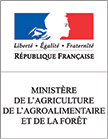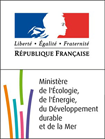Increasing food production while safeguarding natural ecosystems, climate and the provision of ecosystem services is now one of the biggest scientific, social and political challenges of our time. Forest restoration is a strategy to mitigate climate change, but scaling up efforts may increase competition for land for agriculture.
The Discussion Forum will present practical experiences from the Mayombe Transfrontier Initiative in the Congo Basin and new research on reforestation in Brazil. The audience will learn more about the impacts that restoration has had in these regions on poverty, society and the economy.
The Mayombe Forest, shared by three countries –Angola, The Republic of Congo and the Democratic Republic of the Congo–, forms the southern-western part of the tropical rainforest in the Congo Basin. The area’s forests were estimated in 1950 to cover 500,000 hectares. Unfortunately, the Mayombe Forest has been subjected to decades of severe degradation and heavy utilization of the natural resources. As a result, the total area of the Mayombe ecosystems is around 36,000Km2. Regional leaders are now recognizing that it is essential to preserve and save the remaining rainforest to mitigate and adapt to climate change, enhance biodiversity and provide sustainable incomes, support livelihoods, and enhance food security.
In the Amazon region, Brazil has recently pledged to restore millions of hectares of forests. It is necessary that effective strategies for large-scale reforestation are developed. We discuss opportunities and limitations to large-scale reforestation as well as the possibility of sparing land through a combination of increased productivity, a regional restoration planning framework, and incorporating income-generating activities. Recommendations will be formulated and a policy-oriented brief will be published as a result.
Besides the comparison across countries, the Discussion Forum will also make the connections between sectors: How do communities and the private sector benefit in restoration? And why should corporates be interested in investing into restoring landscapes?
With a look towards private sector engagement, the speakers will address the following issues: (i) Landscape restoration as a new and emerging business; (ii) Private sector engagement as a way to build on sustainable landscapes; (iii) Livestock intensification and sparing land for nature; (iv) Low Carbon Agriculture and the Brazilian government’s perspective on a 2035 land use scenario; (v) Value chain perspectives on restoration and deforestation.
Key questions addressed
- What are the main opportunities and constraints for scaling up restoration initiatives?
- How can we reconcile agricultural production and forest restoration – minimizing potential competition for land?
- Which financial mechanisms best promote forest restoration by design and build upon sustainable production chains?
Background reading
- The Conservation Of The Maiombe Forest, Cabinda, Angola, Within The Framework Of A Transfrontier Conservation Initiative
- Cleto Ndikumagenge, Transboundary Dialogue and Cooperation: First Lessons from Igniting Negotiations on Joint Management of the Mayombe Forest in the Congo Basin
- Charles Mc Niell, talking about the negotiations on REDD (video)
- CBFF Luki REDD+ Pilot Project
- Agostinho Chicaia, A new project aims to foster transboundary cooperation in the management of the Mayombe forest
- Creating space for large-scale restoration in tropical agricultural landscapes
- National plan for restoration of natural habitats
- When enough should be enough: improving the use of current agricultural lands could meet production demands and spare natural habitats in Brazil
- Intensification of cattle ranching production systems: socioeconomic and environmental synergies and risks in Brazil
- Brazilian Coalition on Climate, Forests and Agriculture
- The Road to Paris: collaborative actions leading up to COP21
- Cracking Brazil’s Forest Code
- Brazilian Roundtable on Sustainable Livestock





































